Looking for the best Gochujang chicken recipe?
Our easy Korean Gochujang chicken offers a healthy alternative for wing lovers: baked in the oven rather than deep fried.
The recipe works best when prepared with fresh chicken wings and drumsticks. You can also use skin-on thighs and breasts.
We also include suggestions on what dishes are best served alongside our finger-licking-good sweet and spicy Korean Gochujang chicken.
Save this story to Pinterest!
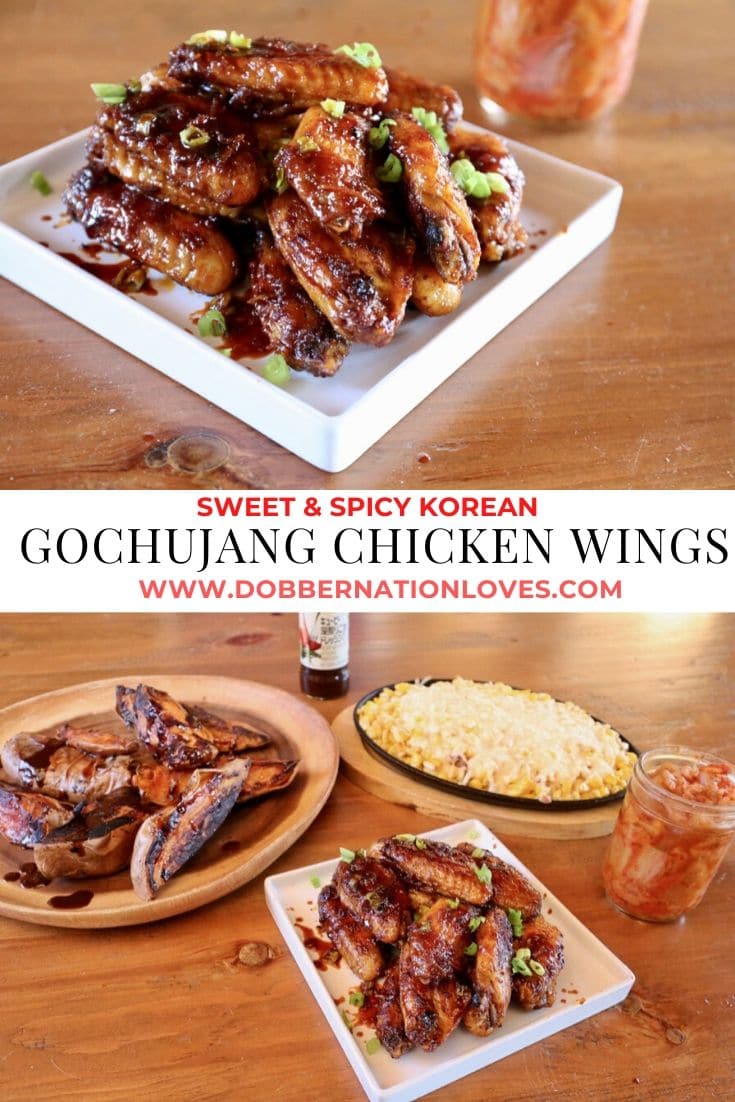
Exploring Sweet & Spicy Flavours in Korea
I spent the year of 2008 living in South Korea. Prior to flying to Seoul from my home in Toronto I had never even tasted kimchi. I would soon learn the ubiquitous Korean condiment is one of the world’s most popular fermented vegetables.
During my 12 month contract in Korea I had the opportunity to travel across the country. I visited famous attractions and tasted regional Korean specialties from Suwon to Busan and Samcheok to Jeju Island.
What I loved most about living in Korea was the countries enthusiastic appetite for tender and juicy chicken. BBQ chicken restaurants can be found in the tiniest towns. While mega-cities feature the neon flashing lights of late night fried chicken concepts.
While there are endless ways to prepare Korean chicken, its distinguishing factor is a perfect balance of sweet and spicy.
Join Dobbernationloves founder Andrew Dobson in the kitchen by signing up for a fun virtual cooking class! Classes begin with a cocktail that you can sip while preparing 2-3 recipes that are curated around a unique culinary theme. Check out our current Cooking Class Schedule!
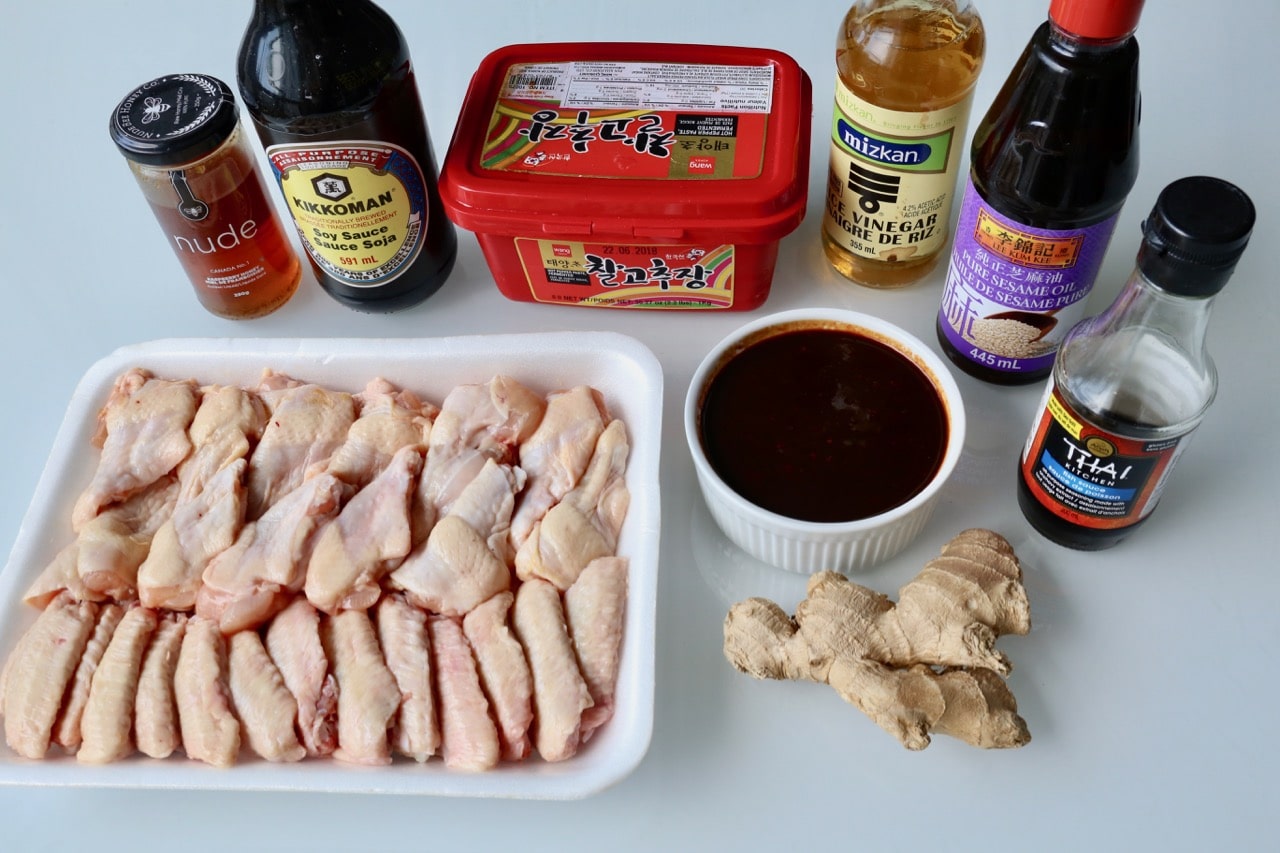

Ssamjang vs Gochujang
Two of my favourite Korean ingredients are Ssamjang and Gochujang. The Korean food products are a standard in any Korean kitchen and are regularly offered as condiments at Korean BBQ restaurants.
Visit a Korean grocery store and you’ll find both products in the same aisle, sold in plastic containers.
So what’s the difference between Ssamjang and Gochujang?
Ssamjang directly translates to wrap sauce or wrap paste in Korean – “ssam” means wrap and “jang” means sauce or paste. As the name suggests, it’s a condiment commonly used when assembling Korean lettuce wraps. It is usually made with gochujang (Korean chili pepper paste) and doenjang (Korean soybean paste) as its base. Ssamjang adds a umami and sweet flavour profile to dishes and is commonly served with grilled meat.
Gochujang is a thick sweet paste made from Korean chile peppers, available in varying spiciness levels. Marinades, dips, soups, meat, stews, rice and other Korean foods get kicked up a notch with the addition of gochujang. Bibimbap, which is considered the national dish of Korea, features gochujang as its main flavour component.
Our Korean chicken recipe features both Ssamjang (for the sweet and umami flavours) and Gochujang (for a hint of spicy).
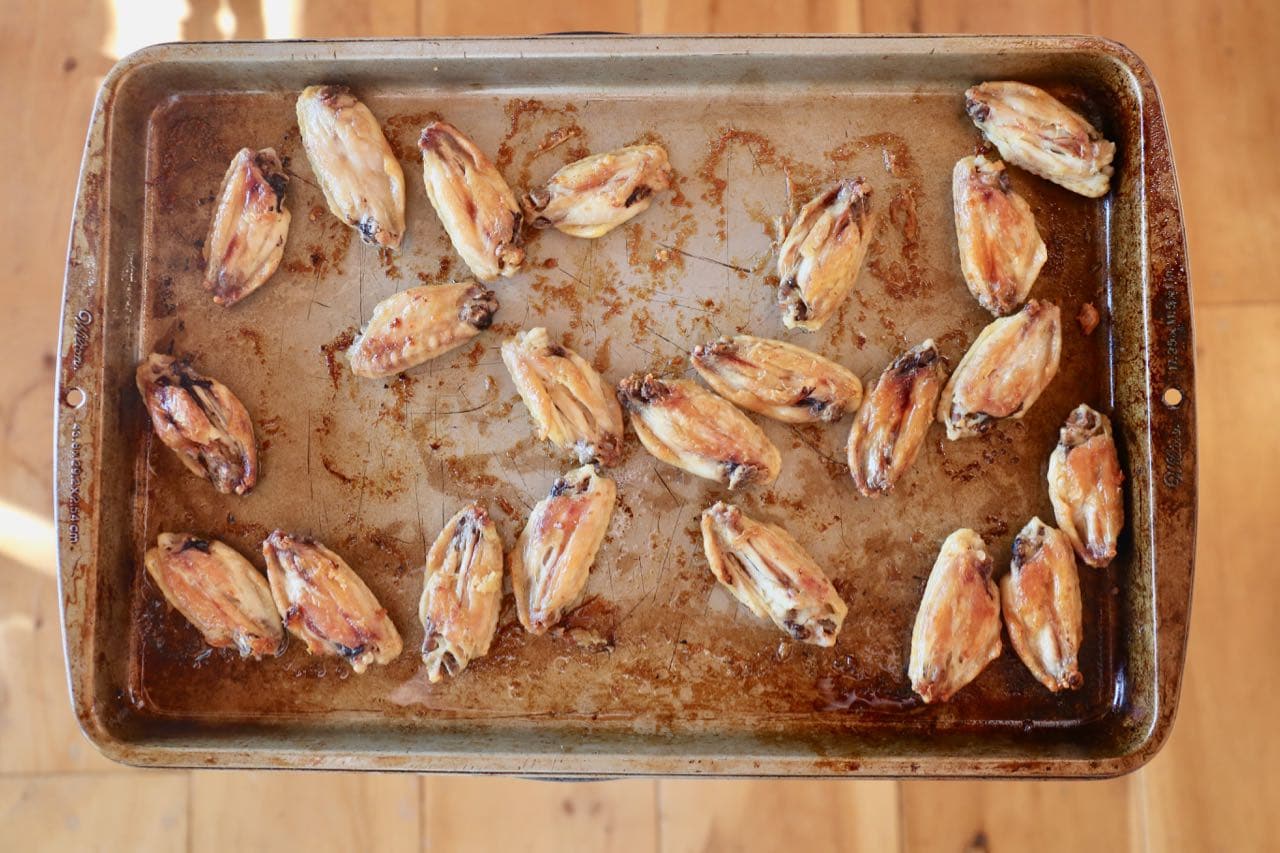
You May Also Enjoy Reading…
- Korean Ssamjang Chicken and Kimchi Nachos
- Peanut and Sesame Noodle Bowl with Korean BBQ Pork and Pickles
- How to Make Kimchi at Home
- How To Make Easy Vegan Chinese Cucumber Salad
- Sweet and Sour Pork Meatball Recipe
- How To Make Spicy Tikka Masala Turkey Barley Soup
- Cajun Spicy Chorizo Corn Salad
- How to Make Crispy and Healthy Baked Sweet Potato Fries
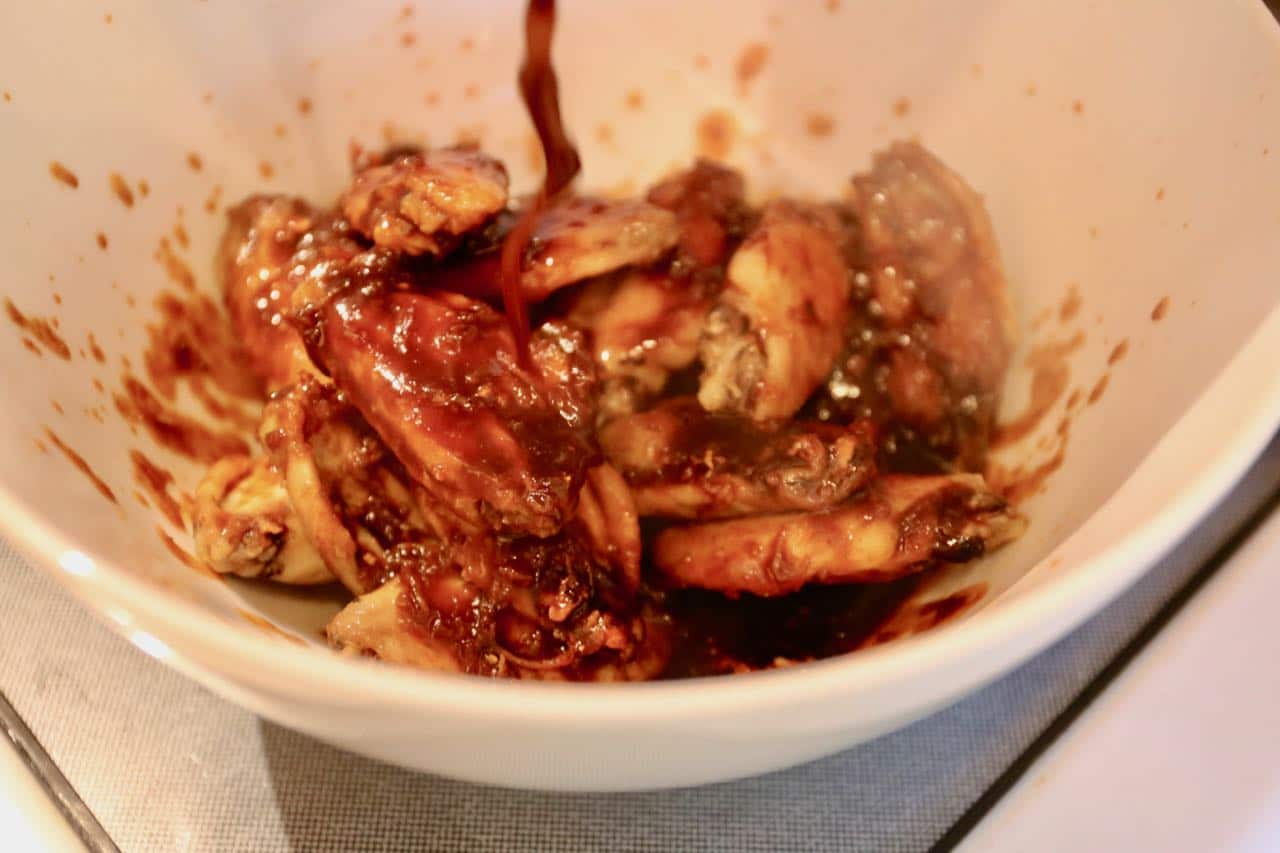
Baked Gochujang Chicken
Looking to make healthy Gochujang chicken? We’ve perfected a recipe that is easy to make at home in your oven and requires no deep fat frying.
We suggest buying fresh organic chicken wings and drumsticks as the skin really crisps up nicely. We’ve also prepared this recipe with skin-on chicken thighs, which taste great but release a bit more moisture. In our experience, after perfecting this recipe over 10 tweaks, chicken wings offer the best meat, skin and sticky sauce ratio.
Baked Gochujang Chicken sauce also gets sticky in the oven. It caramelizes on a baking sheet, adding a smokiness to the dish. Just keep an eye on them so you ensure they don’t burn!
We do not suggest preparing our Gochujang Chicken recipe on a barbecue. The marinade easily sticks to the tender chicken wings and can make a mess of your grill.
TIP: If you live in a rural area and can’t easily find Ssamjang or Gochujang we discovered you can replace the same quantity in the recipe with Thai red curry paste. We learned our lesson in Muskoka when hosting a Korean barbecue at the cottage. We realized we had run out of ssamjang and none of the local grocery stories carried it. The flavours of course will not be the exact same but the marinade is still delicious, offering a unique Thai spin on this delicious dish.
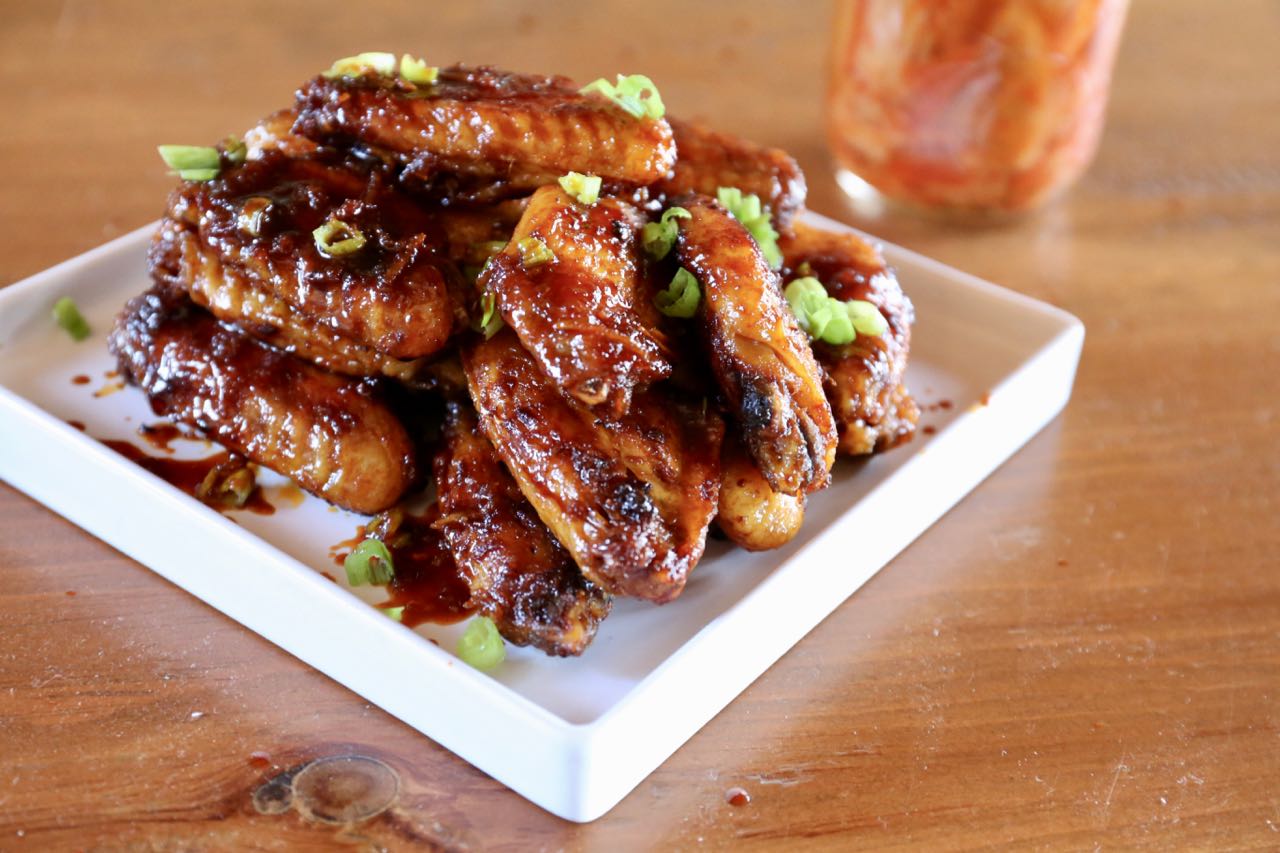
Gochujang Chicken Serving Suggestions
Wondering what to serve with our Gochujang chicken wing recipe? Since the wings are sticky, sweet and spicy, we suggest pairing with your favourite craft beer.
Here are three dishes we love to serve with Gochujang chicken:
- Kimichi: we make our own kimchi recipe at home but you can also buy the Korean condiment at your local grocery store.
- Roasted Sweet Potatoes: Cut large sweet potatoes in quarters and toss in vegetable oil. We bake these on a separate rack in the oven at the same time as the Gochujang chicken wings are roasting. Drizzle the crispy and crunchy sweet potato wedges with your favourite Japanese sesame dressing.
- Sweet Corn Mozzarella Gratin: Drain a can of sweet corn and lightly fry it in a pan with a teaspoon of the chicken fat that renders from the baked wings. Add a tablespoon of red pepper jelly and place in a casserole dish. Top with mozzarella cheese and broil a few minutes before you’re ready to sit down to dinner.
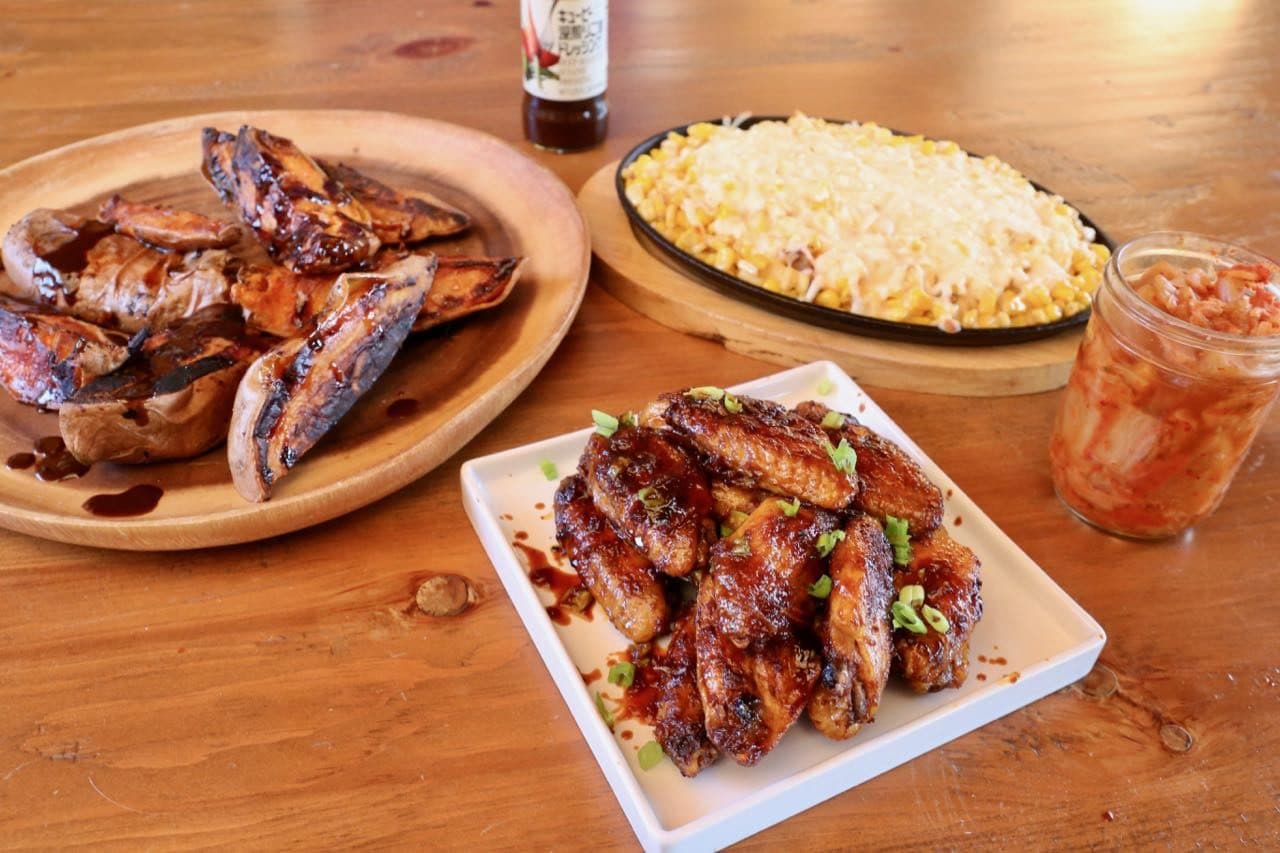
Gochujang Chicken Recipe
Gochujang Chicken
Equipment
- oven
- baking sheet
- tongs
- mixing bowl
- measuring cups
- measuring spoons
Ingredients
- 3 lbs Chicken Wings
- 3 tbsp Canola oil
- 1 tsp Kosher salt
- 2 tbsp Ssamjang
- 1/4 cup Gochujang
- 1/4 cup Honey
- 1/2 cup Light soy sauce
- 1 tbsp Sesame oil
- 2 tsp Fish sauce
- 2 tbsp Rice vinegar
- 2 cloves Garlic, grated
- 1 tsp Ginger, grated
- Sliced scallions and sesame seeds, garnish
Instructions
- Preheat the oven to 400°F.
- In a large bowl, toss the chicken wings with a few tablespoons of neutral oil and season generously with salt.
- Then line a baking sheet with parchment and top it with a wire rack. Spread the wings out on the rack. Roast for 30 to 40 minutes, until the wings are crispy, browned, and cooked through.
- Meanwhile whisk together the next 8 ingredients in another large bowl. Set aside.
- When the wings are done, toss them in the large bowl with the sauce until well coated. Then set them on another sheet tray lined with parchment. Return to the oven for another 5 to 10 minutes (or until crispy with a bit of char).
- While the wings finish, reduce any leftover sauce in a small pan over medium heat until thickened; it should take only a couple of minutes. To serve, scatter the wings on a plate, spoon the reduced sauce over them, and garnish with thinly sliced scallions and sesame seeds.
Nutrition
Save this story to Pinterest!


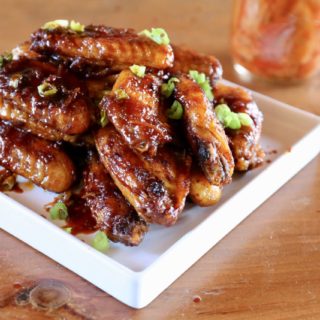


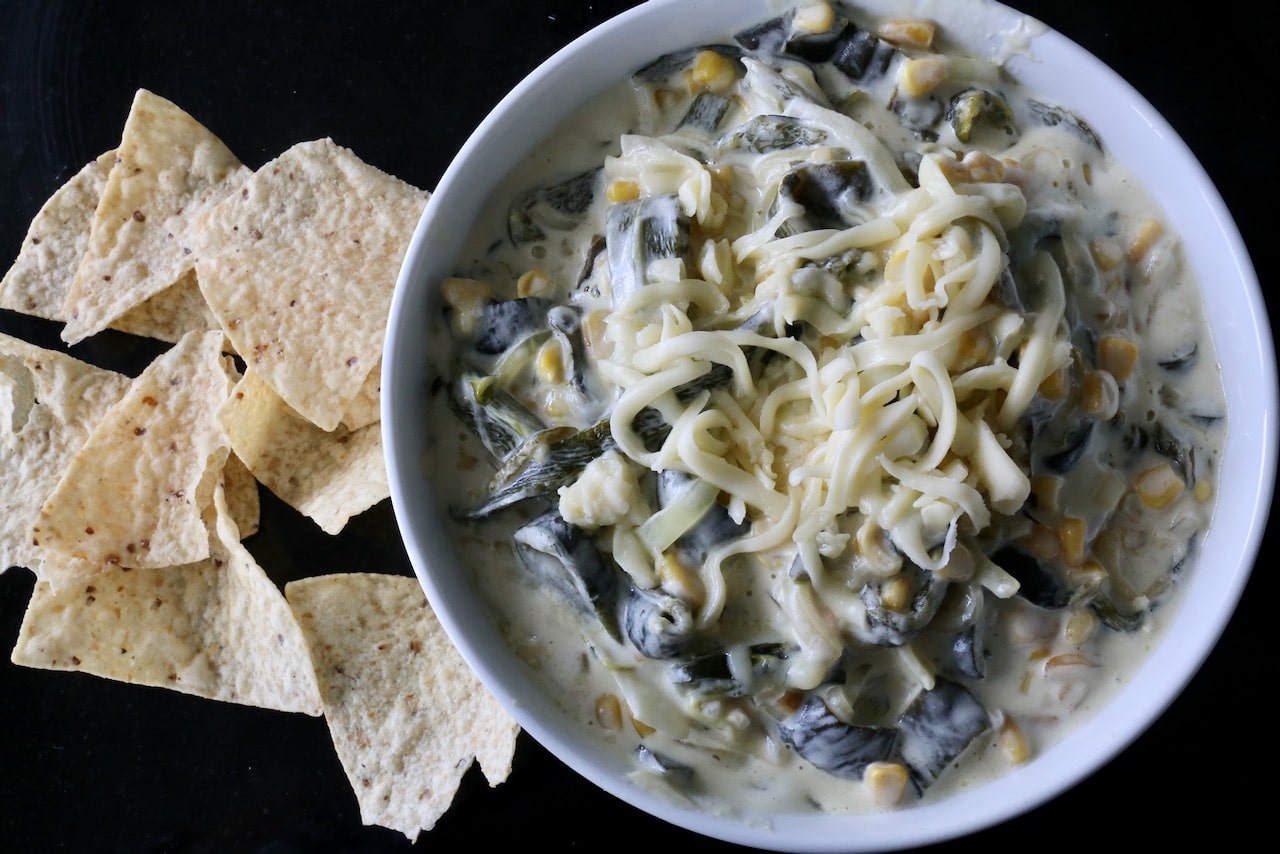
Hi tbere and thanks for sharing this recipe. Instructions say for the first half to line a baking pan with parchment paper and place the chicken on a rack. Then when ready to mix the sauce with the chicken, is the chicken placed on parchment paper in a baking pan without a baking rack? Thank you kindly and I’m looking forward to trying this once I get this clarified :)-
It’s totally up to you but I always use parchment paper to make clean up easier. The gochujang sauce when baked in the oven gets sticky (which is great for the chicken) but can be hard to scrub out when cleaning a pan. enjoy!